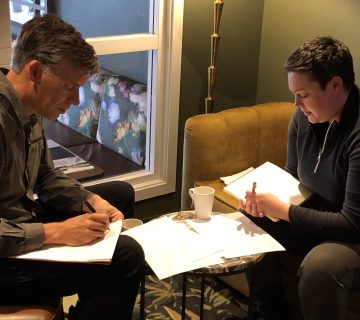Heritage – a continuous dialogue between past and future. Mindful engagement with heritage empowers the past to shape our common future.
“Where the Past Meets the Future” was the motto of the 2018 European Year of Cultural Heritage. But where does this meeting truly occur? Is it in the grand museums, ancient ruins, or perhaps in the silent pages of history books? The answer is more personal and profound — it happens in the moments of interpretation, when we engage with heritage, extract its values, and allow them to shape our future.
Heritage is not just a relic of the past; it is a living dialogue between what was, what is, and what will be. This dialogue occurs when we engage with heritage in a way that allows us to reflect on the values that we, personally, recognise, shaping our present actions and our vision for the future.
When we encounter heritage, we are not merely observing objects, sites, or traditions; we are engaging with the essence of human experience across time. This engagement is where the past meets the future — in the moments of interpretation and personal or collective realisation. Through this personal interpretive process, we decide what is valuable, what is worth preserving, and what lessons can guide us forward.
The value-based interpretive approach is particularly significant in this context. It encourages us to delve into the deeper meanings and principles that heritage represents to us. By recognising and internalising these values, we do more than honor the past; we use it as a foundation to build a better future.
For example, a historic site may tell the story of a community that overcame great challenges. By interpreting this story through the lens of resilience, we gain insights that are not only relevant but also vital for addressing contemporary issues. This approach helps us connect with the past on a personal level, seeing it not as a distant memory but as a source of wisdom that can inform our future choices.
Moreover, the act of preserving heritage itself is a forward-looking endeavor. We conserve what we deem valuable, ensuring that future generations can learn from and be inspired by it (at least, we hope so). This process is inherently optimistic — it assumes that the lessons and values of the past are worth carrying into the future. In this way, heritage becomes a bridge between generations, a continuous thread of human experience that binds the past to the future.
In conclusion, the meeting of past and future occurs in the interpretive moment (the moment of mindfulness), when heritage speaks to us and we choose to recognise, listen (yes, interpretation is an art of listening) and learn its values. By engaging with heritage in meaningful way, we are not just custodians of the past; we are also architects of the future.
Max Dubravko Fijačko is an award-wining heritage interpreter and an IE Certified Trainer for interpretive guides. He is IE’s Gastronomic Heritage Coordinator. Max would like to come in exchange with you about any aspect of value-based interpretive approach. You can get in touch with him at: dubravko.fijacko@gmail.com.
To cite this article: Fijačko, Max Dubravko (2024) ‘Where does the past meet the future?‘ in Interpret Europe Newsletter 3-2024, pg.4.
Available online: PDF-Newsletter_2024_3.pdf



